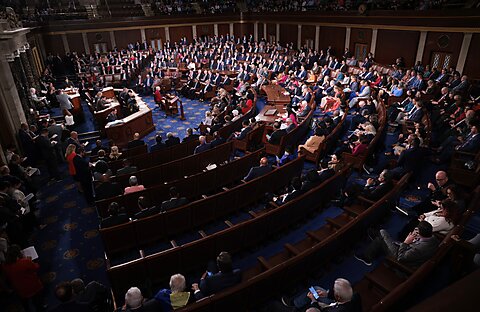The Bretton Woods Committee has released a new call for the United States to launch a central bank digital currency, or CBDC. In fact, the report also calls for the Bank for International Settlements (BIS) and the Financial Stability Board (FSB) to take the lead on establishing CBDC rules and standards around the world.
But like other advocates, the Bretton Woods Committee fails to adequately explain why a CBDC is needed in the first place.
The Same Debunked Arguments
To begin, the report makes the same arguments as others, claiming that a CBDC could increase the use of one currency over others in international trade, preserve monetary sovereignty, and achieve financial inclusion.
My Cato colleague, Norbert Michel, and I have addressed (at length) why these points are misguided. In short, the success of any currency on the world stage is not dependent on whether it is a CBDC. Rather, that success depends on the strength of the economy, the rule of law, and economic freedom.
To the same end, if a government is worried about preserving monetary sovereignty, it should focus on fixing the factors that are core to its success. The note on financial inclusion is similarly misplaced. How a CBDC is supposed to operate through the banking system (the report’s recommendation) but also reach, as the report notes, “those who operate in the informal economy and have no or limited access to traditional banking and payment services” is a mystery.
The report goes on to argue that a CBDC would be better than cash because it is digital. Going further, the report argues that a CBDC would also be better than existing digital money (e.g., bank money, cryptocurrency, etc.) because a CBDC “sponsored by a nation’s central bank could facilitate greater trust and acceptance as a medium of payments, given the historical role of central banks in national payments regimes and their perceived safety as a counterparty.”
Again, as Norbert and I have explained, “digital money” is far from an innovation in 2023. While there are certainly technical distinctions to be made between the different money supply measures and liability statuses, the report’s proposal for an intermediated CBDC with transaction caps and no interest payments is effectively a prepaid card with additional identity verifications more than anything else.
Furthermore, the idea that central banks are trusted over the private sector is not a safe assumption. Pew Research reports that even in the United States, public trust in government is at historic lows (Figure 1). Likewise, a Cato Institute survey found that 79 percent of Americans trust the private sector to handle their money more than the government.
Conclusion
The Bretton Woods Committee report calls for governments and international organizations to push forward on CBDCs, but it fails to first make the case for CBDCs. Yet, this problem isn’t a complete surprise—establishing what problems are not being addressed by the private sector already and what problems can only be solved by a CBDC may be the greatest challenge for CBDC proponents. The lack of clear benefits is why 78 percent of Americans and 85 percent of Canadians said they would not use a CBDC if issued. And the lack of benefits is partly why 94 percent of Nigerians do not use the CBDC that has been issued.
Yet, even if benefits that can be substantiated do emerge, then there are still the risks of CBDCs that proponents must contend with. As it stands, the evidence is clear: CBDCs present a net negative for society. Governments around the world are pushing forward with CBDC development, but it’s time to reverse course.









